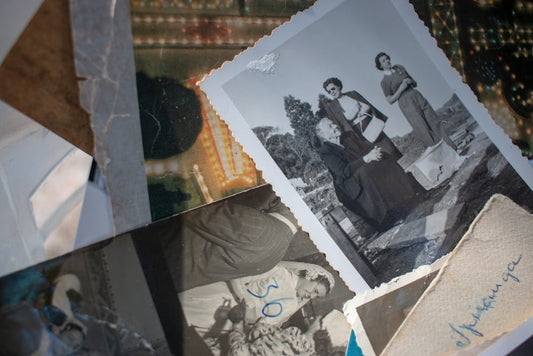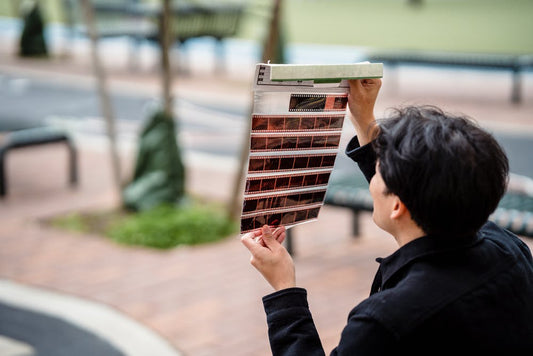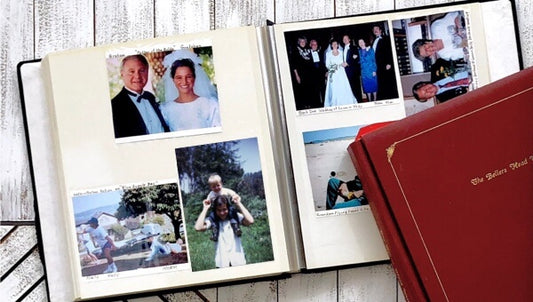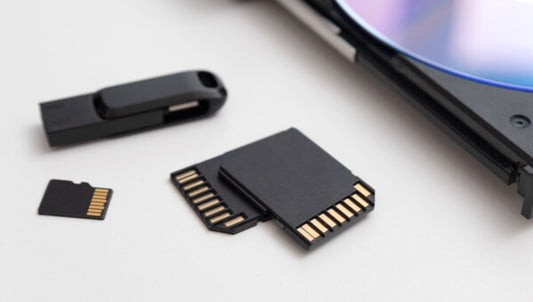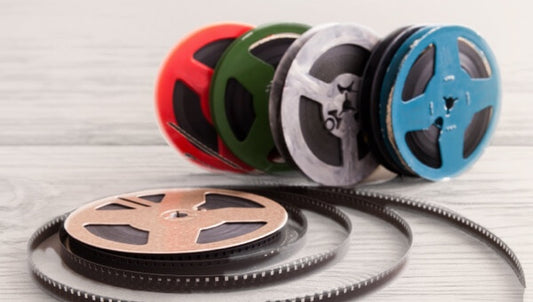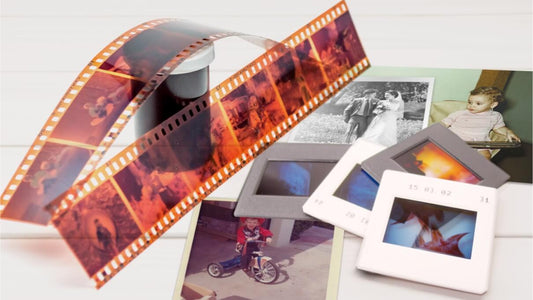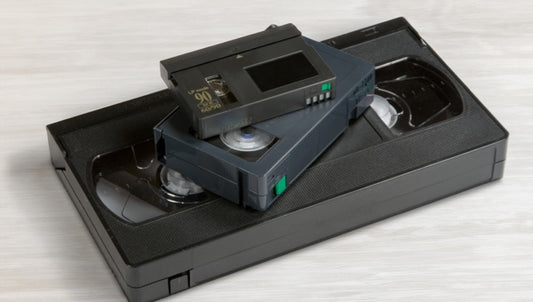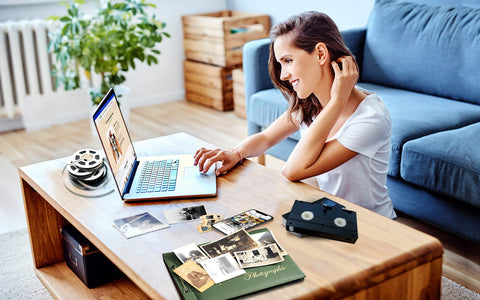Polaroid instant cameras were a fun way to capture precious memories and special events and immediately be able to share the print photo with loved ones. While digital cameras and smartphones also offer instant gratification, there’s something spectacular and charming about Polaroid pictures.
Capture has been preserving memories for over 20 years, but we also want to help you create new precious photo memories. That’s why we put together this blog to help you master Polaroid photography.
Keep reading to learn about the history of Polaroids, necessary equipment, special techniques, tips, and more so you can take the highest quality instant film photography.
Jump To:
- The History of Polaroid Pictures
- Essential Equipment for Polaroid Photography
- Mastering Techniques for Polaroid Pictures
- Advanced Techniques for Creative Polaroid Photography
- Tips for Getting the Best Results
- Inspiring Examples and Ideas for Polaroid Pictures
- Conclusion
The History of Polaroid Pictures
The Polaroid Corporation was founded by Edwin H. Land who invented the first instant camera during World War II. Not long after the war, the first Polaroid camera was released in 1948. However, with this model, the photographer had to time the development and pull out the print photo through chemicals. Then, they had to peel away the top film to reveal the photo image underneath.
The first black-and-white prints weren’t introduced until 1950 and the original ones were sepia-tone. While people cherish sepia-tone photos these days for a nostalgic, antique appearance, black and white film was much more popular at the time.
In 1963, color prints were added to Polaroid photography. By 1977, Polaroid dominated the instant camera market despite attempts by Kodak to dethrone them. While Polaroid instant cameras would remain popular during the 1980s, the sales began to decline as 35mm cameras became smaller and cheaper.
When digital photography created instant photos that you could duplicate, share over email and social media, delete, and more, instant film cameras became nearly obsolete. However, lots of people still like to use them for instant prints and retro photo experiences.
Essential Equipment for Polaroid Photography

The only two things you really need for Polaroid photography are the camera and the film prints. In addition, depending on the type of photography you plan on using your vintage Polaroid camera for, you may also want a strap, tripod, or case. We also recommend a photo album that you can put the instant prints in as you take them to ensure they don’t get damaged.
When choosing a Polaroid camera, there are several things you want to look for. The first thing you want to consider is the film type. Try to get a camera that works with SX-70 or 600 films like the Polaroid OneStep, because those are the easiest to buy in 2023. You also need to avoid I-type film because it won’t work in a vintage Polaroid camera. Second, you want to find a camera that offers all the necessary features within a decent budget.
The Polaroid 600 Square Instant Camera is one of the cheapest options. In fact, it’s available on eBay for around $20. It’s easy to use, offers a flash range of 2 to 10 ft, and offers point-and-shoot capability. Another option is the Polaroid SX-70 SLR Land camera Sonar Autofocus, which created vivid contrast with manual focusing and aperture max f/8. One final option if you’re willing to spend more is the Polaroid 600 SLW 690 Folding Instant Film Camera that offers sonar autofocus, camera controls, lens sharpness, and more.
Whichever option you get, it will create instant photo prints in iconic Polaroid style with a white border and color film. However, you can also choose a non-Polaroid photo camera like the Fujifilm Instax Mini or Instax Wide that creates similar instant photography. Instax cameras may not be as iconic as Polaroid, but they work well, and some are very budget-friendly.
This is especially true if you consider the film itself. If you’ve ever shopped for Polaroid film, then it will be no surprise to you that many people ask us, “Why is the Polaroid film so expensive?” The answer is that it’s more complex and requires more chemical layers than Instax film.
Mastering Techniques for Polaroid Pictures
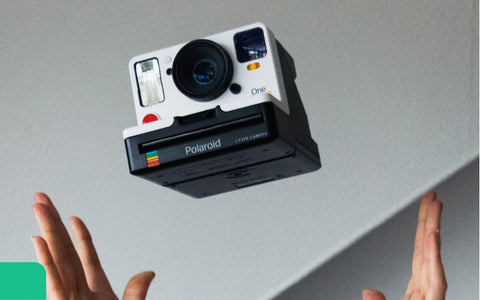
To ensure the best photographs, whether you are taking a picture of your best friend, a crowded Mother’s Day celebration, nature, or anything else, it’s important to understand the best techniques. You’ll need to play with exposure and lighting to ensure bright, but not light-flooded cameras.
The darker the area, the more exposure you’ll need. If the picture comes out too dark or bright, then simply adjust the exposure as necessary and try again. It may take a few attempts to get used to the exposure settings, but once you do then you’ll see how easy it is to create certain aesthetics with Polaroid style photos.
You shouldn’t use Polaroid film photos to take pictures of nearby objects. We recommend standing at least 4 feet from the subject of your photo. Additionally, try to use the Polaroid frame as a guideline to center the photo, add style, and experiment with contrasting colors around the edges of the viewfinder.
The best-looking Polaroid’s are generally taken in bright areas. Because of this, when you are first using your Polaroid camera, we recommend focusing on outdoor shots during a sunny day. Once you get used to this, you can move indoors or try other lighting situations. When you do perform indoor photography, 600 film works much better than SX-70 film.
Those are the basic techniques for shooting Polaroid pictures, but there are more advanced strategies for Polaroid photography to create unique prints and aesthetics for scrapbooking, art shows, and more.
Advanced Techniques for Creative Polaroid Photography

After you figure out how you do Polaroid pictures and can get good results consistently, it’s time to use more advanced techniques. One thing you can start to experiment with is different moods and settings. For example, you can use monochrome film and black and white photography to create a nostalgic, mysterious, or antique appearance to your photos.
You can also try to experiment with different backgrounds that highlight the foreground and subject of your photo. While it’s typically recommended to center the subject of your photo, try doing it differently and create non-symmetrical photography. You can also try taking photos with multiple subjects like your friend next to wildlife.
One advanced technique you can try is to use the double-exposure feature that’s available on some instant cameras like Mini Polaroids. This creates surreal and sometimes humorous photos by blending a light image with a dark image. It will look like ghosts or shadows and can be a lot of fun to play around with.
You can also use a long exposure to create stunning night shots. To do so, you will need the camera in darkness. Then, turn the exposure all the way to light and the shutter will open for 14 seconds. This causes long exposure to deepen the contrast and create blurry light lines, especially with city lights and neon signs.
Finally, you can try photo editing techniques by creating digital copies of your analog photos. This allows you to add animations, organize on your iPhone, combine photos, create slideshows, and more while still retaining the original classic Polaroid style.
Tips for Getting the Best Results

In addition to using the best practices and experimenting with advanced techniques, there are a few tips you should keep in mind with your camera and film. You should take good care of your Polaroid film and store it somewhere cold and dry. This will ensure that the development chemicals last.
Additionally, it’s a good idea to practice staying steady, especially when you are shooting in dark settings. If you have a hard time staying still throughout the exposure period, then you may want to invest in a tripod or strap.
After taking the photo, be patient! It can take 10 to 15 minutes for the colored picture to fully develop, so don’t worry if it still looks bland after a few minutes. During this process, keep the picture somewhere warm and protect it from light that can interfere with the development process. While you may have seen people shaking Polaroids (or maybe you’ve done it yourself), it’s better to wait for it to naturally develop.
Another tip is only relevant if you are planning on flying. You may have wondered, “Can Polaroid go through TSA?” An X-Ray machine can certainly ruin the color of Polaroid film and make the pictures appear pink, cloudy, or even red in severe cases. Because of this, it’s best to tell the TSA agents to check the film by hand instead of risking X-Ray interference.
Inspiring Examples and Ideas for Polaroid Pictures

If you need some inspiration for your Polaroid pictures, try browsing Pinterest for some great examples. Not only do they showcase some great photography, but also some creative ideas for your print photos like creating scrapbooks, collages, extended Polaroid posters, maps, and more.
Finding good examples of Polaroid photography can show you all the possibilities for your own photos. You can create sepia tone, black and white, color, overexposed, double exposed, long exposed, and tons of other types of photos with a simple Polaroid camera.
Try keeping your photos fresh by exploring different themes, subjects, lighting, and approaches to photography. In addition, if you have digital photos that you want to give the Polaroid feel to, there are apps available so you never have to wonder “Can you turn pictures into Polaroids?”
Conclusion

Polaroid photography is fun, nostalgic, and experimental while providing instant gratification and all you need is a vintage Polaroid camera and some film. Just make sure you use best practices before experimenting too much with exposure, lighting, and complex subjects. Try starting with single subjects at least 4 feet away in bright lighting and you’ll discover how exciting and easy it is to create instant photo memories.
But Polaroid pictures don’t last forever and are vulnerable to damage over time. That’s why we recommend digitizing your Polaroid photos with Capture. Click here to learn about our professional photo scanning services!


